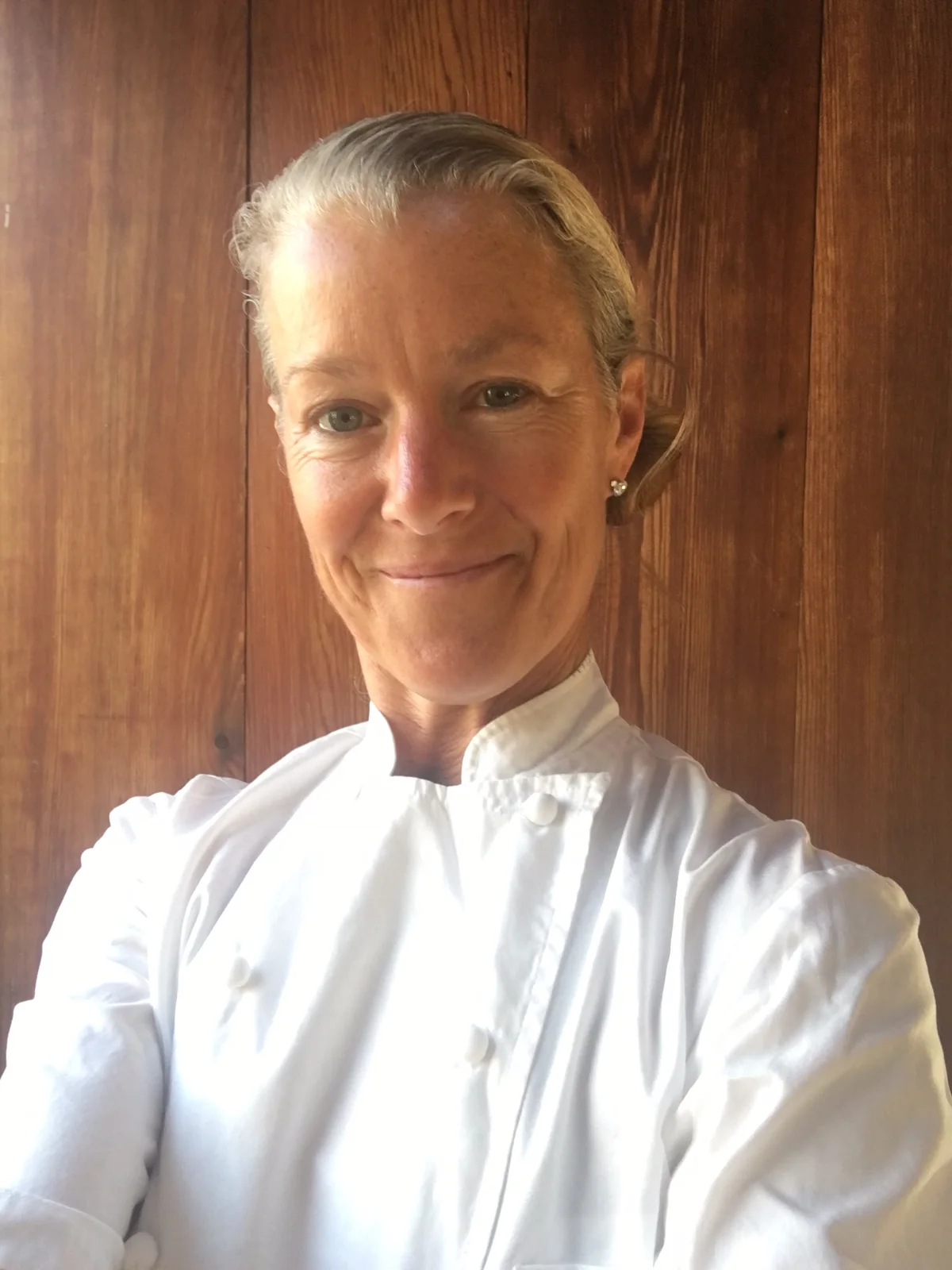We recently connected with Kualani Kennedy and have shared our conversation below.
Kualani, thanks for taking the time to share your stories with us today Risk taking is something we’re really interested in and we’d love to hear the story of a risk you’ve taken.
In 2021, during the pandemic, I was still living in Bolinas, CA, and it occurred to me that I had to buy land for myself. I must follow this path toward land stewardship, growing food, and cooking for people. But this time, I had to do it on my terms. I bought a 10-acre ranch in northern New Mexico and took a massive leap of faith. I moved the horses and myself to a remote valley at the foothills of the Sangre Cristo mountains outside a small town. It was rough; the Aframe needed work, the roads were sometimes impassable, the snow was insane, and I was alone with my horses and newly acquired three Great Pyrenees. I tried to find work as a chef in this small town, as an executive chef for a mountain home Community Lodge, but I quickly realized it was like trying to fit a round peg in a square hole. I had no other choice but to go back to what I knew. I hired a friend to watch my ranch and animals, and I took off for a year traveling as a private chef. I went from coast to coast back and forth, working for six different clients as a fill-in chef and temp chef, and did special family reunions for long-term clients and last-minute gigs. By the end of that year, I had taken over 20 flights and cooked in nearly eight different cities. I was burnt out. I missed my animals and my new ranch that I barely lived in. The last flight that year was to Molokai to visit my father, who had retired from his 50 years of farming there. I had just finished a two-week gig on Maui working for Jensen Huang, the owner of Nividia. The day I arrived on Molokai, I ended up in the hospital with appendicitis. No doubt from overworking and traveling and stress. It was time to go home to my ranch, which had been waiting patiently for me to dig my heels into it.
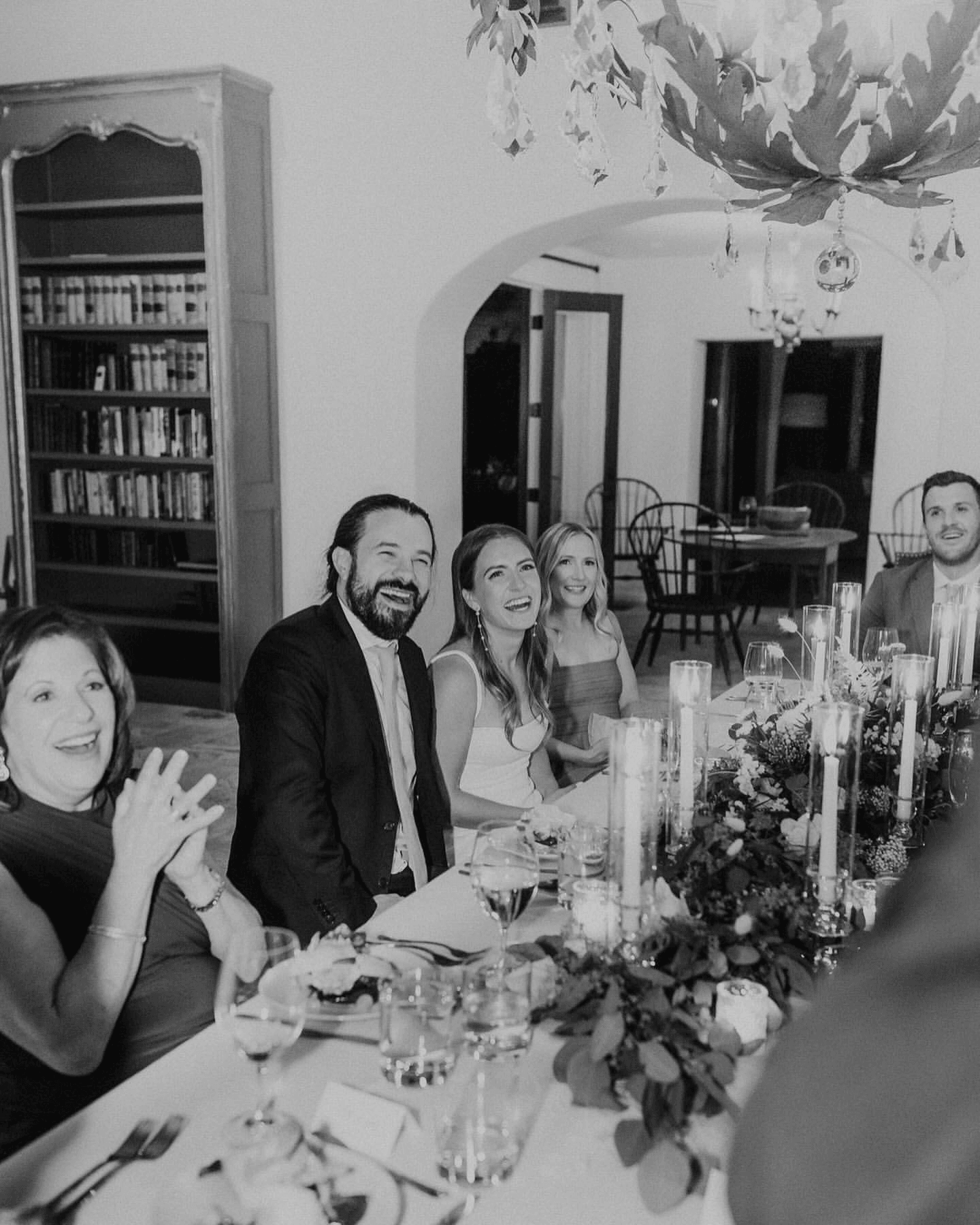
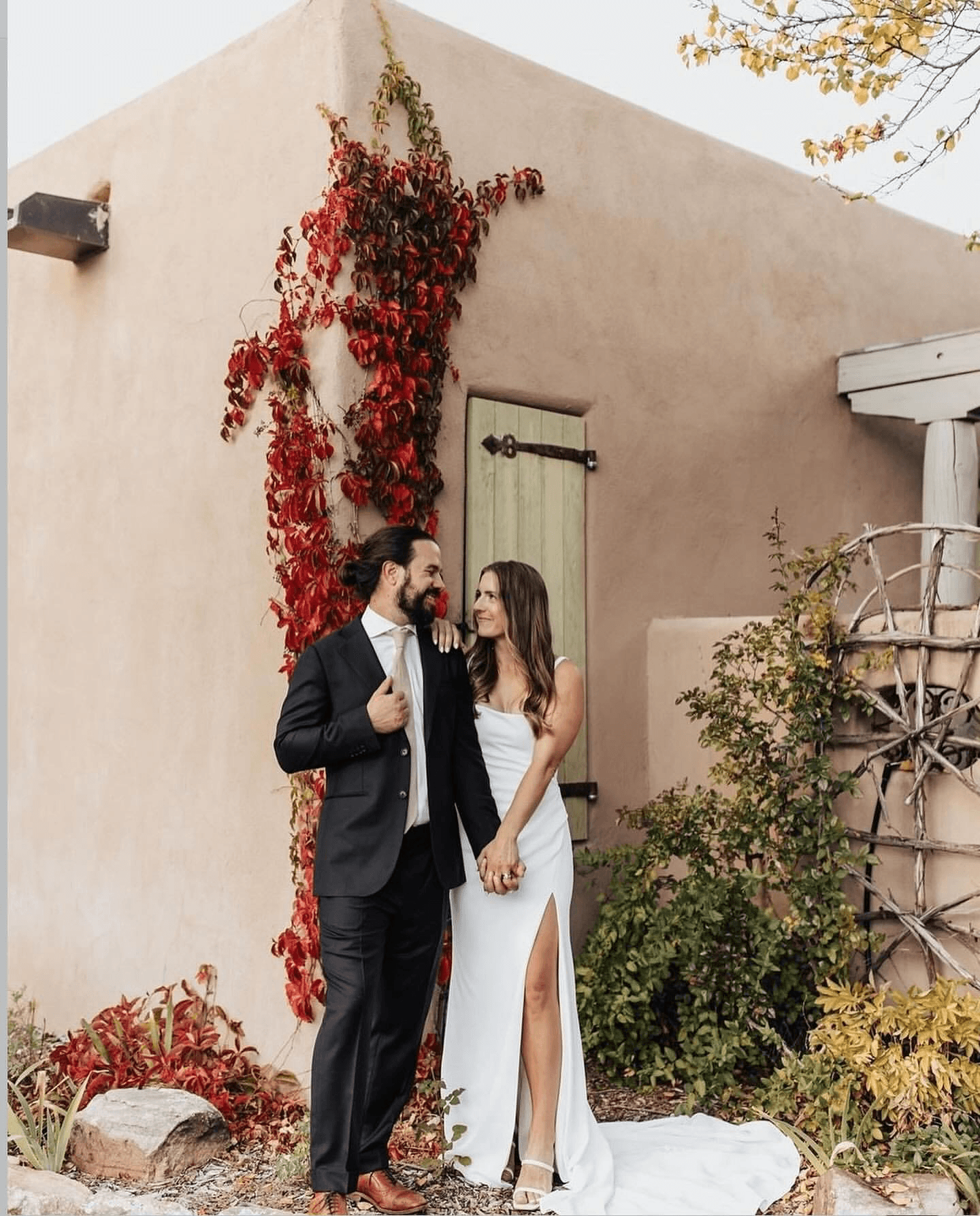
As always, we appreciate you sharing your insights and we’ve got a few more questions for you, but before we get to all of that can you take a minute to introduce yourself and give our readers some of your back background and context?
I grew up on a ranch in the Missouri Ozarks until I was seven. During those formative years, I was surrounded by animals that provided my parents and me with milk, eggs, meat, and companionship. The animals were as much a part of my childhood social structure as anything else. My bonds with the horses, cows, chickens, geese, pigs, and dogs profoundly impacted my social and emotional development. Building relationships with these animals offered me the opportunity to develop motor skills and engage in learning about the natural world at a very young age. This experience set the tone for how I see and interact with the world.
At age 7, we moved to St. Louis, MO. I started Montessori school, and my mother went to nursing school and later became a surgical nurse. My parents divorced; my father moved to Hawaii to start an organic farm on the island of Molokai, and my mother was completely and utterly dedicated to raising me with the best schools and cultural diversity possible. She also built extraordinary gardens, which was the beginning of my creative cooking path. At age 12, I was already cooking dinner parties for her friends weekly. By age 16, I had worked in professional kitchens in St. Louis as a busgirl, prep cook, and eventually sous chef at top restaurants. By 19, I was off to the Culinary Institute of America in New York. I never looked back. After graduating, I fell into private chef work in NYC for ultra-high-net-worth individuals, entering the high society of New York City as a domestic private chef.
I continued to cook for the 1% for the next 30 years, preparing meals for my clients and their families and traveling with them to their homes around the country. I loved it. Everything about the situation was a perfect fit for me: dinner parties nightly, family-focused food needs, working with children and adults, different diets, kitchen gardens, and the best products available. I excelled at it. By age 45, and having lived on the Upper East Side of NYC for most of my life, I was restless and ready for change. It was 2018 when I moved to Bolinas in West Marin, CA, a small farming community just north of San Francisco. This move changed everything; it propelled me into the regenerative ranching world.
I continued private cheffing for hedge fund owners, celebrities, and CEOs of the largest tech giants in San Francisco. At the same time, I lived in this idyllic town of farmers and green pastures, just a 45-minute commute across the Golden Gate Bridge. I acquired three equines, got back into riding, and grazed them in a field next to Bill Niman of Niman Ranch. I started observing Bill and his land; he used the rotational grazing method for his cows. This became an obsession for me. Bill is recognized worldwide as a model of regenerative ranching. It is not just a grass-fed approach to ranching but, more importantly, the most powerful way to capture and store carbon from the atmosphere and return it to the ground. Around that same time, the movie “Kiss the Ground” came out—Woody Harrelson’s documentary on how grazing hooved livestock is a unique and potent way to reverse climate change. Wow, this took my passion for food to another level. To this day, it is my primary motivation and fuels my business to this day.

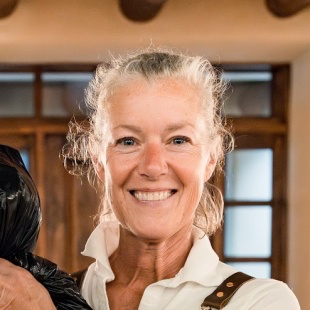
How about pivoting – can you share the story of a time you’ve had to pivot?
It was early spring of 2022 in New Mexico. I had spent a grueling year traveling and knew that moving forward, I had to find work near my ranch. So, I returned to the Mountain Home Community Lodge in New Mexico and devised a new role as their catering director to work alongside the lodge manager. I quickly booked 15 weddings for the upcoming season, took deposits, and was ready with a new team of hand-picked chefs and menus. Then the unthinkable happened. The Hermits Peak – Calf Canyon fire occurred at our last meeting to kick off the new venture. It burned through my ranch property, sparing the house thanks to the hotshot crews, but the lodge and the kitchen where I was to cook those 15 weddings burned to the ground.
I and all my animals were evacuated. I had no home to go to, no kitchen to cook these weddings in, and the first wedding was a week away.
So, for the next four months, as my dogs and I couch-surfed while my horses evacuated to a nearby ranch, I cooked all fifteen weddings in churches, school cafeterias, friends’ apartments, and eventually, my back porch, where I set up three Instant Pots. We were allowed to go home temporarily while the fire ravaged other parts of the county, eventually burning half a million acres. The lodge was destroyed, but my little A-frame, which was now gutted and in preparation for renovation, was all I had left. So I bought three Instant Pots and a chef’s knife and went to work on the remaining weddings. By the end of that season, I had completed all 15 weddings. I created a simple website during this time and received five-star Google reviews from each wedding. It was not my plan to go into business for myself. I did not know about bookkeeping, food costing, payroll, or hiring and training staff.
I took a leap of faith when I decided to go to New Mexico. Faith challenges us to grow.
There’s a quote I will never forget:
“An entrepreneur is someone who jumps off a cliff and builds a plane on the way down.”
I really identified with that quote; somehow, it brought me comfort that I was on the right path.
By the end of 2022, Netzero Ranch Catering was born and in full throttle. In 2023, we made over $200,000 in sales. We refined the business, narrowed our niche market, and learned how to run a business efficiently. However, our current actions are still premised on improving the environment, or at least not assuming more waste or increasing carbon in the atmosphere.
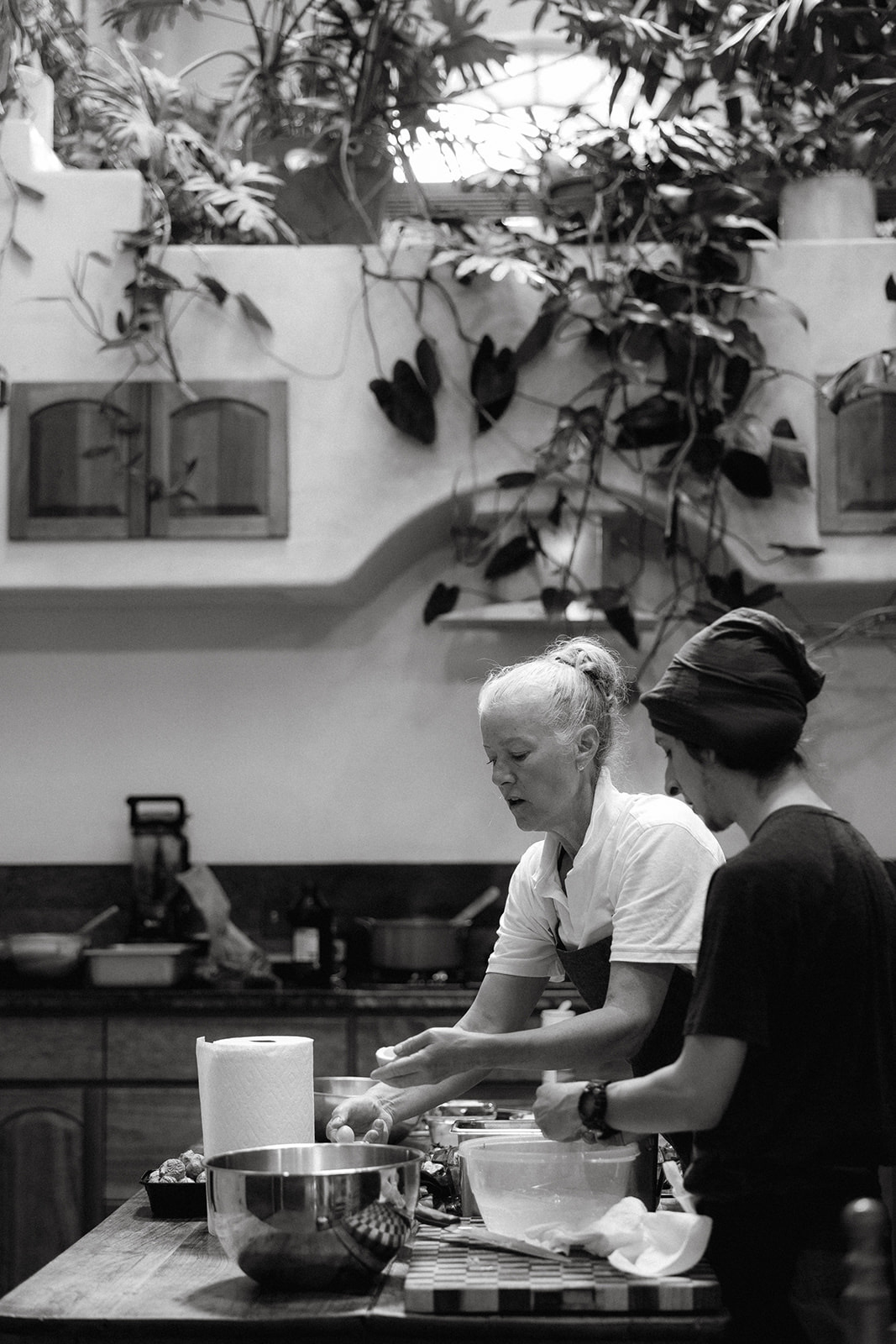
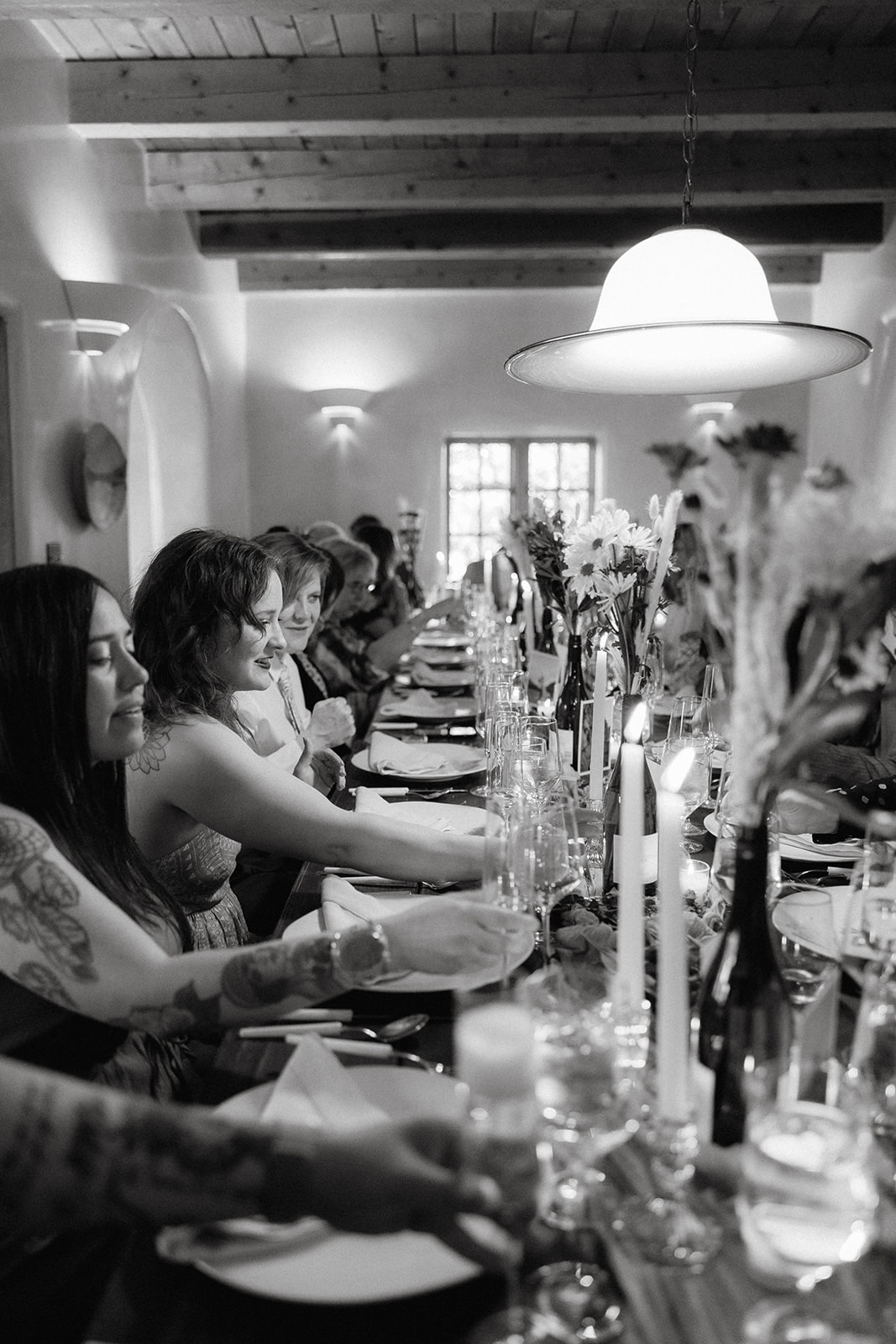
What’s a lesson you had to unlearn and what’s the backstory?
When working as a chef in NYC and San Francisco from 1996 to 2016, much of the work was done for you; the food was transported into the city and delivered to us. Though I did have a solid connection to the farmers—my father was a farmer, and my mother was a gardener—I had never farmed myself. Other than my summers in the Hamptons, where I shopped daily at farmers’ markets and had kitchen gardens available, the winters were a lot of phone orders and deliveries right to my door. I wanted to change that when I started Netzero Ranch. I wanted to be a part of the soil somehow. Today, we do not grow any food; we make compost. We reduce the carbon waste from the events and create soil amendments for our future garden plan.
The other unlearning is based on this statistic:
“The average wedding produces 400 to 600 pounds of garbage:
– Single-use items: Many wedding items, such as decor, flowers, invitations, programs, and menus, are used only once.
– Food waste: About 10% of wedding food is thrown out, with cake being the most significant contributor.
– Carbon emissions: Weddings also produce 63 tons of carbon dioxide, almost four times the average yearly carbon footprint for an individual in the United States.”
I am pretty sure we have taken this issue as seriously as possible.
Our products and services are modeled for a specific type of event. We didn’t start ideally, but we have perfected our model to achieve three things:
1) The events are small and have a minimal carbon footprint. We specifically do micro-weddings and events for a minimum of 16 and a maximum of 75 people.
2) We only buy from local ranchers and farmers who practice some interpretation of organic and regenerative ranching. Our ranchers and farmers are all dedicated to their craft of raising humane beef, pork, bison, and lamb. We use produce that has just been harvested and sold either at the Santa Fe farmers’ market or directly from the farmers we work with.
3) We serve all our food using biodegradable palm leaf and bamboo products. We do not use single-use plastics and minimize landfill items as much as possible.
These efforts result in an average 1-5 pound landfill trash bag at the end of each event. Using more biodegradable products and fewer non-biodegradable products ultimately creates more compostable waste. This waste is brought back to my ranch and composted along with the nitrogen-heavy biomass from the horses. The palm leaf plates and food scraps are folded into six large compost bins weighing 5-10 tons. The bins are dated by when they were started and when they will be ready for usable soil amendments. The biodegradable waste from our events is turned into soil for growing produce for future events. We are still working on the second phase, which includes extensive gardens and a large greenhouse, but for now, we have created around 20-30 thousand tons of finished compost.
We are a small company averaging 20 weddings a season. We only do one event at a time, so we can focus on the client and ensure their wedding or event is perfect. Each micro-wedding client is primarily from out of state. They come to New Mexico for a destination wedding. Many parents have second homes here; we use these estates for events, and they work perfectly for what we do. These clients are environmentally aware and are thrilled to hire a company like ours.
We do not cook like typical caterers. Our kitchen has no ovens or stoves. We still use those three Instant Pots for beans and stocks. They run on solar power at the ranch. Our smoked meats are done off-site, and our baker has her bakery in Taos.
Not much is precooked, transported, and reheated at an event. There are no warming ovens, chafing dishes, or sternos at the event. We pack trucks with cast iron flattop grills, Asado wood-fired grills, olive oil, and butter. Everything is cooked on-site at the venue, private estate, or ranch and served hot and fresh. We label all trash bins with signs depicting what is biodegradable and what is not. We offer large glass water containers for hydration stations to eliminate single-use plastics. We also provide wildflowers from the ranch for the tablescapes to avoid florists flying in and selling flowers. Even the oak wood used in the grills is harvested from timber from our ranch’s fallen trees, some of which are charred from the fire and others needed for thinning.
Each event takes seven days to prepare for, expedite, and unpack. I think of our micro-events as a dinner party for my mother’s friends in St. Louis. It’s all freshly made and served just like a big backyard party. My food is not pretentious but showcases color, texture, flavor profiles, and well-balanced combinations. I am grateful to have trained under very talented chefs in my youth. Those chefs taught me discipline and traditional cooking techniques that I still use today. Other than that, the farmers and ranchers do the most justice to our success. Without them, I would not be able to do what I do. Our dishes are seasonal, and I include and co-create the menus with each client. There are things we do not ever do, like serve fish. We used to fly in fresh fish from Seattle, but the carbon footprint was too big. We never serve foods that are not in season. We also try to source all our dry goods from the Santa Fe Co-op. Even the corn for our polenta and tamales is grown and processed in Taos.
It’s a lot of work: sourcing, prepping, packing, loading, transporting, unpacking, setting up, expediting the event, cleanup, repacking, reloading, transporting back to the ranch, unloading, and unpacking—insane, right? We gladly do it anyway. Having a micro-wedding in a beautiful field or at a gorgeous estate or ranch is magical and worth all the work we put into it.
It’s now the end of 2024. I have a few more gray hairs, and there is still so much work to be done at the ranch. I’m still learning about growing food, composting, and defending against weather, pests, climate change, and factory farming, especially animal factory farming. I want things to change quickly. I hope people will start to listen, wake up, and make that change together. I keep thinking that when I set out to move to New Mexico to do things my way, I signed up to follow the universe’s way. With a lot of patience and dedication to my craft and the environment, I’m making my way slowly. I will retire soon since I have been cooking for 32 years. I plan to keep investing, build more gardens, plant trees, and become more involved in animal and farming welfare activism. I will never really know the plan for me. But I’m grateful I did one thing in my life to make a difference. Life is an adventure, and it’s still unfolding every season.
Contact Info:
- Website: https://www.netzeroranch.com/
- Instagram: https://www.instagram.com/netzeroranch/
- Linkedin: https://www.linkedin.com/in/kualani-kennedy
- Other: Google
https://www.google.com/maps/place/Netzero+Ranch+Catering/@36.0776885,-105.63318,9z/data=!4m6!3m5!1s0x8719993484caff1d:0xb52f787ec680cfa5!8m2!3d36.0776885!4d-105.63318!16s%2Fg%2F11s9y9kzmf?hl=en-us&entry=ttu&g_ep=EgoyMDI0MTAxNi4wIKXMDSoASAFQAw%3D%3D
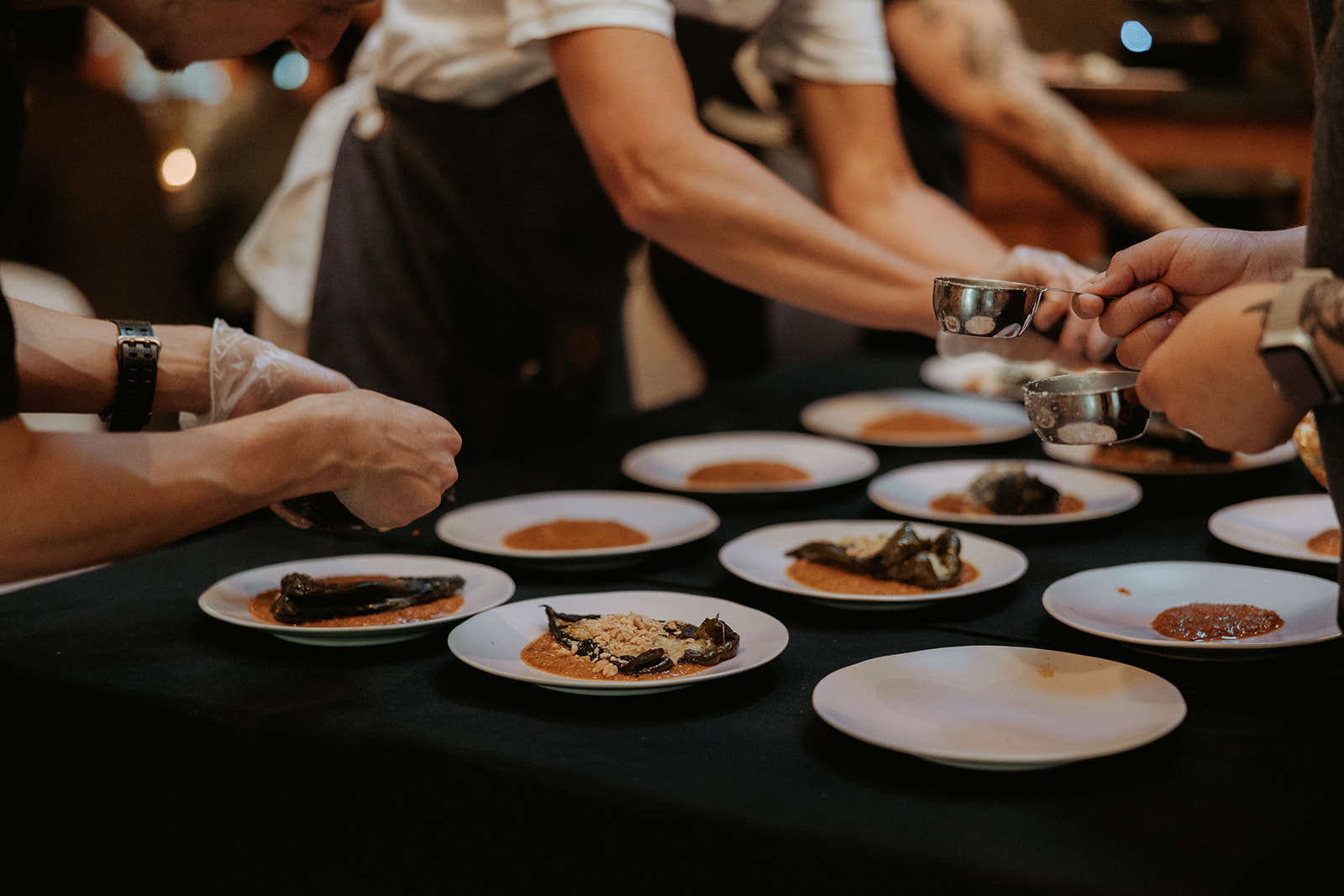

Image Credits
www.crystalcousin.com
www.jacdodgephotography
www.alicialucia.com
www.jennalunaphoto.com


